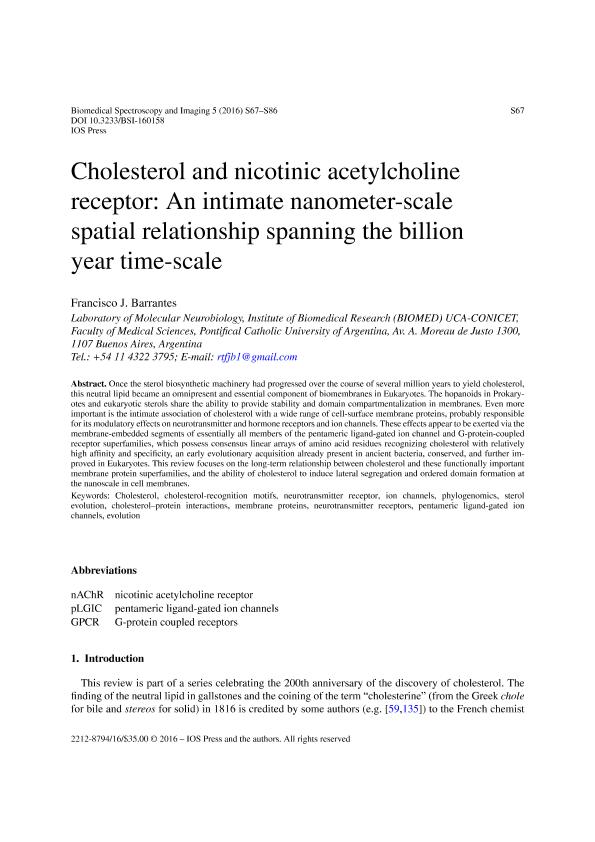Artículo
Cholesterol and nicotinic acetylcholine receptor: An intimate nanometer-scale spatial relationship spanning the billion year time-scale
Fecha de publicación:
12/2016
Editorial:
IOS Press
Revista:
Biomedical Spectroscopy and Imaging
ISSN:
2212-8794
Idioma:
Inglés
Tipo de recurso:
Artículo publicado
Clasificación temática:
Resumen
Once the sterol biosynthetic machinery had progressed over the course of several million years to yield cholesterol, this neutral lipid became an omnipresent and essential component of biomembranes in Eukaryotes. The hopanoids in Prokaryotesand eukaryotic sterols share the ability to provide stability and domain compartmentalization in membranes. Even more important is the intimate association of cholesterol with a wide range of cell-surface membrane proteins, probably responsible for its modulatory effects on neurotransmitter and hormone receptors and ion channels. These effects appear to be exerted via the membrane-embedded segments of essentially all members of the pentameric ligand-gated ion channel and G-protein-coupled receptor superfamilies, which possess consensus linear arrays of amino acid residues recognizing cholesterol with relativelyhigh affinity and specificity, an early evolutionary acquisition already present in ancient bacteria, conserved, and further improved in Eukaryotes. This review focuses on the long-term relationship between cholesterol and these functionally important membrane protein superfamilies, and the ability of cholesterol to induce lateral segregation and ordered domain formation at the nanoscale in cell membranes.
Archivos asociados
Licencia
Identificadores
Colecciones
Articulos(OCA HOUSSAY)
Articulos de OFICINA DE COORDINACION ADMINISTRATIVA HOUSSAY
Articulos de OFICINA DE COORDINACION ADMINISTRATIVA HOUSSAY
Citación
Barrantes, Francisco Jose; Cholesterol and nicotinic acetylcholine receptor: An intimate nanometer-scale spatial relationship spanning the billion year time-scale; IOS Press; Biomedical Spectroscopy and Imaging; 5; s1; 12-2016; S67-S86
Compartir
Altmétricas




